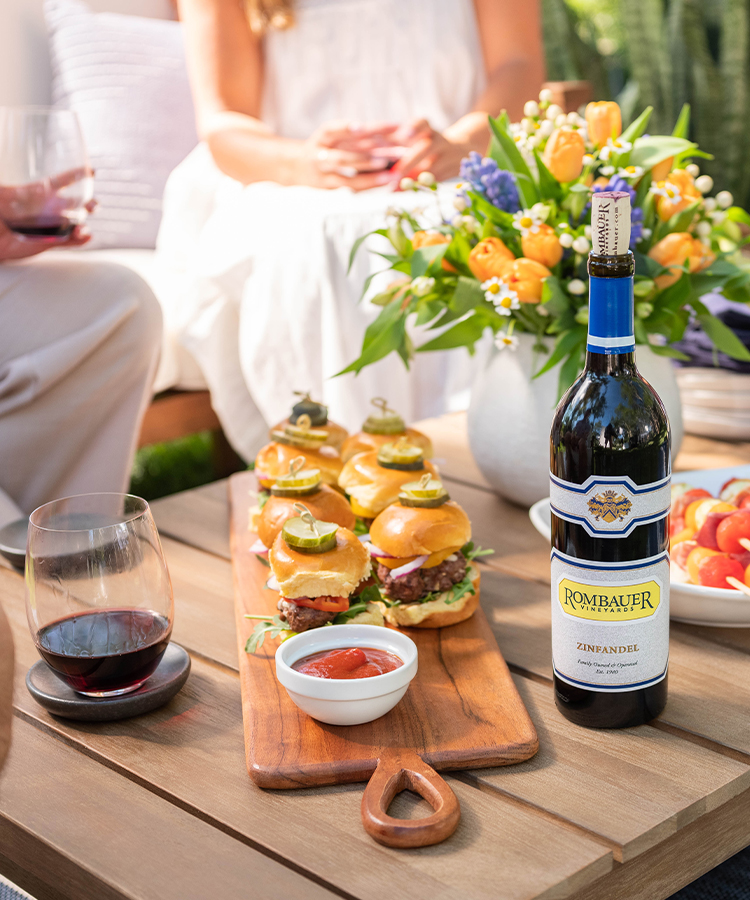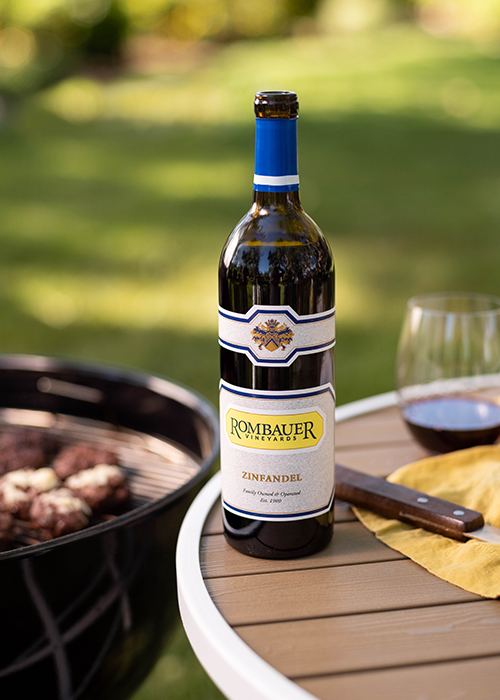If you truly know California wine, you know Zinfandel. And if you know Zinfandel, then you most certainly know Rombauer Vineyards.
The late vintner Koerner Rombauer started Rombauer Vineyards in 1980. Four years later, the winery released its first offerings: a Cabernet Sauvignon and a Chardonnay. The producer would soon become synonymous with the opulent white grape — becoming an award-winning powerhouse in Napa Valley and across the globe for as long as it has been in business.
But Rombauer has another ace up its sleeve — Zinfandel.
Not long after opening Rombauer Vineyards, Koerner met Steve Harvey, a winemaker in Amador County. Known for launching Ménage à Trois, the hugely successful label, Harvey introduced Koerner to the luscious fruit of the Sierra Foothills, El Dorado, and Twin Hills region. The budding winemaker fell deeply in love with the grape and Rombauer Vineyards released its first bottle of Zinfandel soon after.
Though Zinfandel can trace its genetic roots to Croatia, it has become a quintessentially California grape. Brought to the East Coast in the 1800s, Zinfandel was introduced to California during the Gold Rush and became the most widely planted grape in the Golden State. Thin-skinned like its cousin Pinot Noir, Zinfandel is a temperamental grape that requires patience and the ideal growing conditions. But when everything hits just right, which is exactly what Rombauer strives for, the result is sublime.
The grapes in the Zinfandel blend are described by Richie Allen, Senior Director of Viticulture & Winemaking at Rombauer, as “incredibly concentrated and full of fruit flavor.” He says ”The majority of them come from the Sierra Foothills of Amador and El Dorado Counties, Lake County, and a touch of Napa County.”
Allen, who originally hails from Australia, fell in love with winemaking on a rock climbing trip to the States that included a wine tasting. He flew back Down Under and committed the next few years to oenology. The winemaker officially joined the Rombauer team in 2006 and has helped guide the award-winning portfolio and the vineyard into the future with an eye on innovation and sustainability.
Using a combination of traditional methods and cutting-edge tech — like optical sorting machines that take photos of every berry for the ideal fruit and aerial photos from NDVI maps (Normalized Difference Vegetation Index) — Rombauer goes to painstaking lengths to ensure that the best fruit is used to produce the best wine. “If you are not constantly trying to improve, you are falling behind,” Allen says.
Rombauer’s Zinfandel is destemmed, put through the optical sorter, followed by tank-fermentation — unlike the Cabernet and Merlot. After basket-pressing, it’ll spend around 15 months in French and New American Oak barrels. “The reason we use the American Oak,” Allen adds, “is that with a riper style of wine, it pairs a lot better. It’s soft in tannin, it has a lot of vanilla and coconut flavors and pairs perfectly with the ripe, jammy fruit.”
Rombauer Vineyards now has over 350 acres of sustainably farmed Zinfandel vines within several appellations that offer a range of climates, soils, elevations, and age of vine plantings. “The vines are anywhere from 60 to 110 years old, they have a quality and character to them that’s truly unique. It adds a depth and volume that you can’t fake,” adds Allen.
Diener Vineyard in Lake County lies at 1,700 feet in elevation, while the Napa Valley vineyards have patches of volcanic soil and a dry Mediterranean climate that promotes intense and concentrated fruit. In the Sierra Foothills, the estate vineyard Twin Rivers is cooled by its elevation rather than fog. Sandy soils and a complex topography make the ideal location for the Zinfandel grape.
The various sites give Rombauer a range of high-quality fruit with different aroma and flavor profiles that blend into a masterful, opulent, yet versatile wine. Rombauer’s Zinfandel offers aromas of boysenberry and bold black plum notes underscored by clove and vanilla. The dark berry flavors linger on the palate where they mingle with pomegranate and dragon fruit. Light pepper and dried orange peel notes complement the fruit profiles with fine tannins and a pleasing acidity in each sip.
If you haven’t added Rombauer’s Zinfandel to your list, now is the time. Enjoy it with Italian meatballs and a red sauce, baby back ribs, fresh berry pie, or simply on its own — because either way, you get a rich, delicious taste of California history.
This article is sponsored by Rombauer Vineyards.


